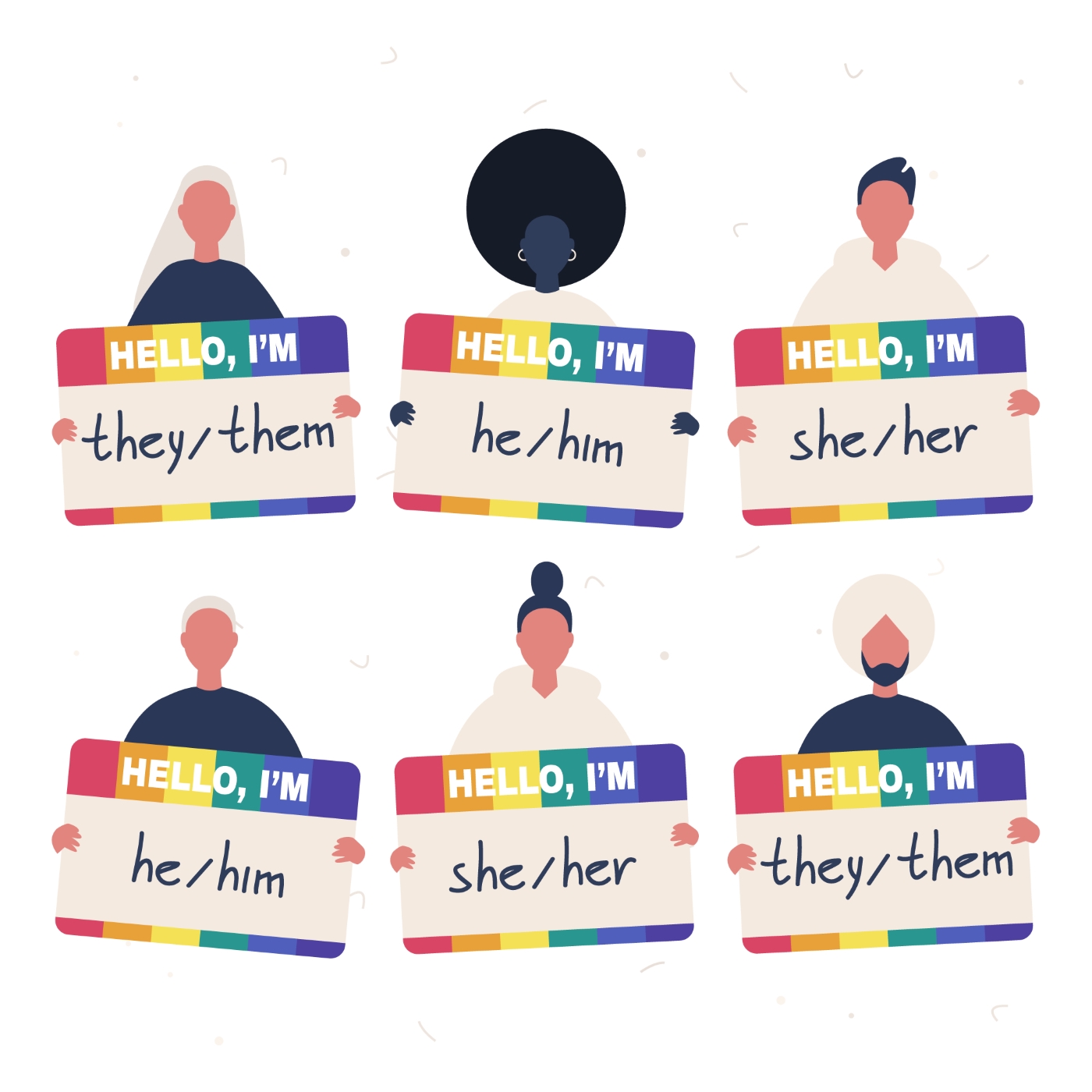As language continuously evolves through changing culture, innovation, and human migration, translation must continuously adapt to be appropriate and accurate.
One of these new adaptations has been how to approach non-binary pronouns.
Non-Binary Pronouns
Non-binary pronouns have more widespread use than ever before. In fact, a 2020 survey conducted by The Trevor Project—an LGBTQ suicide prevention and crisis intervention organization—found one in four LGBTQ+ American youths use non-binary pronouns.
Sharing one’s pronouns has become widespread on social media and in colleges as a way of introducing oneself and adjusting for others accordingly.
In 2019, Merriam-Webster expanded the dictionary definition of “they” to include “a single person whose gender identity is non-binary.”
As an alternative to the binary gender pronouns “he/him” and “she/her,” non-binary pronouns offer people a variety of options, including the ones below:
- they/them
- zie/zim
- ve/ver
- ey/em
- per/per
- ze/zir
For example, in English, the sentence “She grabbed her book” using they/them pronouns becomes “They grabbed their book.”
However, this is how non-binary pronouns are used in only one language. English doesn’t distinguish between genders except in assigning a person a singular pronoun. Other languages express gender or assign it to words in a variety of ways, so taking proper cultural consideration when translating is critical.
In Spanish
In Spanish, feminine and masculine cases are added to all nouns, not just people. Many Spanish-speaking activists are pushing back against the language’s strict gender binary.
In the United States, it’s becoming more common to see “Latino” written as “Latinx” or “Latin@.”
In Argentina, young people are altering the entire way they speak to replace the masculine “o” or the feminine “a” in certain words with a more gender-neutral option, “e.” In this fashion, “Bienvenidos,” or “welcome,” becomes “Bienvenides”—a more inclusive and inviting greeting.
In German
Some languages, like German, have notoriously complicated gender grammatical structures. Every noun, adjective, verb, and adverb is conjugated to match one of four cases and one of three genders: feminine, masculine, and neuter. This makes adjusting gender in speech tricky.
However, the existence of a neutral pronoun (though it was not often used for people in the past) presents opportunities for change.
Many German universities have switched from using the gendered “Studenten” to the neutral “Studierende” when referring to their students. Additionally, official state documents are increasingly written with gender-neutral terms.
In Estonian
Other languages, like Estonian, have no gendered nouns or personal pronouns at all. This makes it easier to avoid gendering someone incorrectly. The gender-neutral pronoun “tema” refers to any human and is commonly used.
However, LGBTQ+ youth have noted that it does not exempt the Estonian language from subtle male biases and assumptions about gender. The ending “-ke” is used with diminutive nouns—something meant to be small and cute—and it’s almost always used to imply feminine characteristics.
In Hebrew and Arabic
Hebrew and Arabic linguistic organizations are drawing non-binary linguistic cues from classical religious texts. In Hebrew, scholars have posited that the Talmud phrase “Bri’a bi’fnei atzmah” refers to “a being created of its own”, subverting the binary male and female options and providing a more open translation.
Modern Standard Arabic, which is based on the Classical Arabic written in the Qur’an, has dual options for nouns and verbs that don’t imply gender, such as “huma” (هما), or “they,” that are becoming more common.
In Native American Communities
The idea of referring to someone without identifying their gender isn’t a new concept within Native American communities. They have had terms for “two-spirit” people and other LGBTQ+ and gender-variant people for hundreds of years.
In French
In French, young people have started using asterisks to combine masculine and feminine case endings, such as “ami*e*s” for “friends,” instead of the masculine “amis” or feminine “amies.”
The Linguistic Revolution
In many grammatically gendered languages, mixed groups of people are referred to with a masculine term, even if it’s just one man among ten women.
LGBTQ+ activists and linguistic experts from around the world have been pushing these traditional language boundaries to come up with more inclusive words.
Now, linguistic revolutions are happening. Changes are being made to language and grammar to allow for more inclusive speech.
Language is incredibly nuanced thanks to the complexity of the human condition and constant evolution of culture, and translating appropriately and inclusively can be a challenge. G3 Life Sciences understands how powerful words can be and how critical it is to translate as accurately as possible. To learn more about collaborating with us to make language more accessible and equitable, contact us today.
